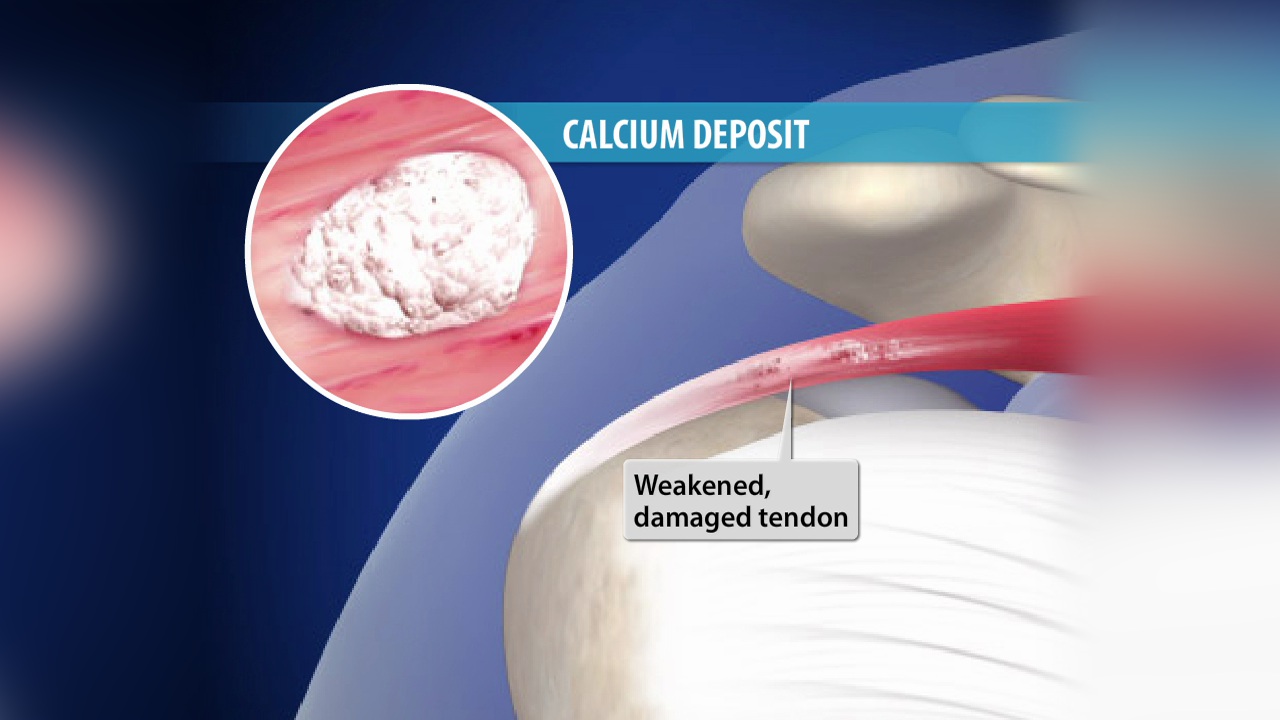- Home
- Calcific Tendinitis
Calcific Tendinitis
Calcific Tendinitis of the Shoulder
Calcific tendinitis of the shoulder is a condition that causes the tendons in the shoulder, known as the rotator cuff, to become inflamed. Additionally, calcium deposits begin to build up, which are dense, bonelike structures. This condition typically appears in people between the ages of 40 and 60 and is caused by overusing the shoulder. There are both surgical and non-surgical procedures available to help you get back to your daily routine.

Anatomy
Your shoulder is made up of three bones: your upper arm bone (humerus), your shoulder blade (scapula), and your collarbone (clavicle).
The head of your upper arm bone fits into a rounded socket, known as the glenoid, in your shoulder blade. A combination of muscles and tendons, known as the rotator cuff, keep your arm bone centered in your shoulder socket. The rotator cuff covers the head of your upper arm bone and attaches it to your shoulder blade.
Within the shoulder joint, there are small, fluid-filled sacs known as bursae (also called bursa). Their purpose is to provide a cushion between your joints, which helps reduce friction between the muscles and bones in the joint.The exact cause of degenerative calcification is not known. Physicians believe it is triggered by the wear and tear of aging. Over time, normal use of the shoulder can weaken and damage the tendons of the rotator cuff. As the fibers of these tendons attempt to heal, calcium crystals can be deposited in the tissue. The crystals collect to form large, painful deposits.
BOOK AN APPOINTMENT
“KNEEO Technique”
For
Knee Replacements
Description
Calcific tendinitis of the shoulder is when calcium deposits build up in your shoulder muscles and tendons, also known as the rotator cuff. It is one of the most common causes of shoulder pain. You’re more likely to be affected if you perform a lot of overhead motions, such as heavy lifting, or play sports like basketball or tennis. Other factors can also cause this condition, such as:
- Genetic predisposition.
- Abnormal cell growth.
- Abnormal thyroid gland activity.
- Bodily production of anti-inflammatory agents.
- Metabolic diseases, such as diabetes.
This condition is typically seen in adults between 40 and 60 years old, and women generally are more likely to be affected than men.This condition is typically seen in adults between 40 and 60 years old, and women generally are more likely to be affected than men.
Symptoms
When calcific tendinitis of the shoulder first begins, the symptoms are very mild and generally include:
- Minor pain that is present both with activity and when at rest.
- Pain radiating from the front of the shoulder to the side of the arm.
- Sudden pain when lifting or during reaching movements.
- Athletes in overhead sports may have pain when throwing.
As time passes and the injury worsens, the symptoms may worsen into:
- Pain at night.
- Loss of strength and motion.
- Difficulty doing activities that place the arm behind the back, like buttoning or zippering.
This painful condition occurs when calcium deposits form in tendons of the rotator cuff. These tendons and surrounding tissues in the shoulder become inflamed. This condition typically affects adults.The most common symptom of this condition is moderate to severe shoulder pain. Patients often describe it as a burning sensation. The pain is usually caused by physical activity, especially by lifting the arm. The shoulder may also feel stiff and the range of movement may be limited.


